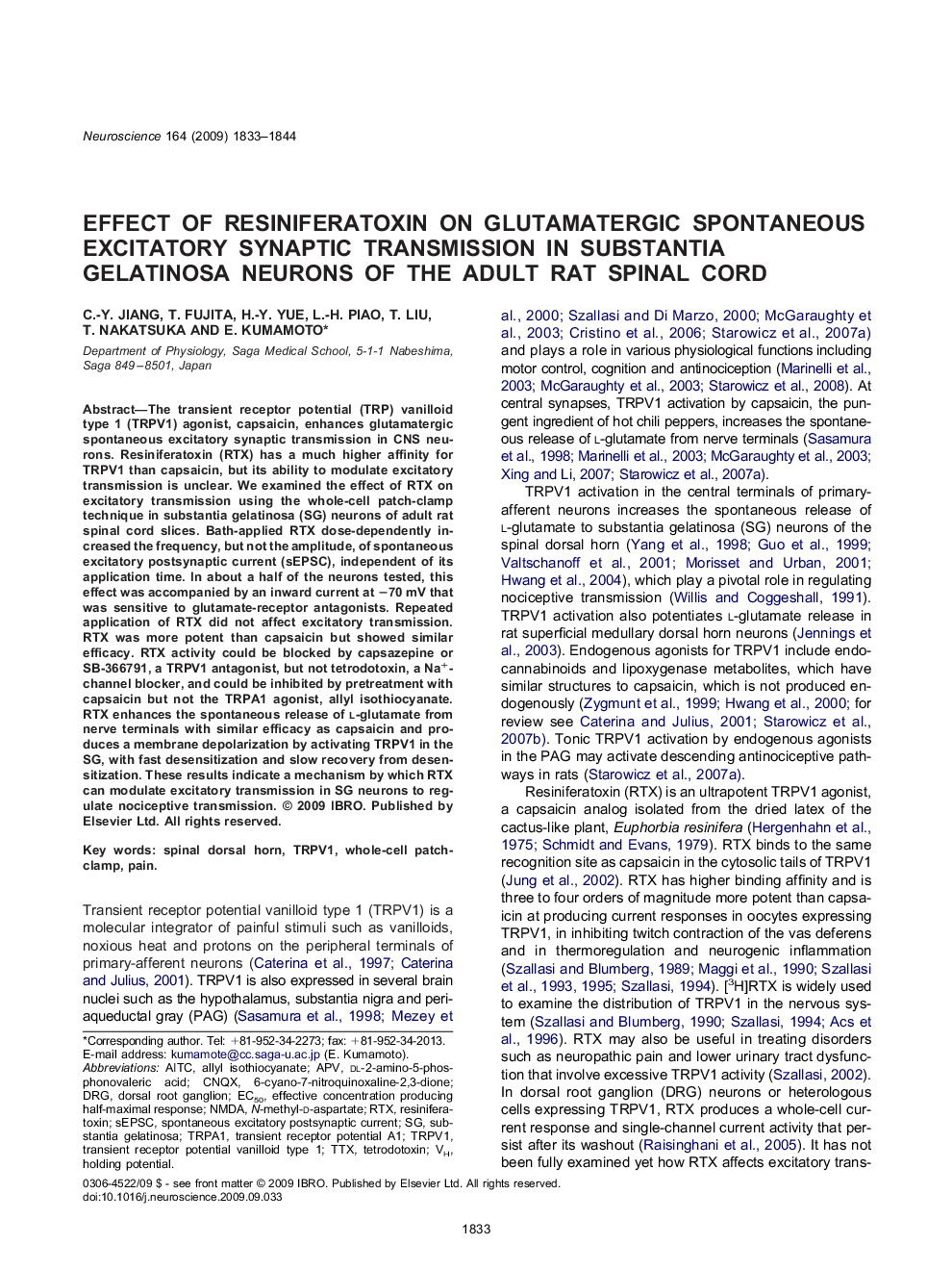| Article ID | Journal | Published Year | Pages | File Type |
|---|---|---|---|---|
| 6277982 | Neuroscience | 2009 | 12 Pages |
The transient receptor potential (TRP) vanilloid type 1 (TRPV1) agonist, capsaicin, enhances glutamatergic spontaneous excitatory synaptic transmission in CNS neurons. Resiniferatoxin (RTX) has a much higher affinity for TRPV1 than capsaicin, but its ability to modulate excitatory transmission is unclear. We examined the effect of RTX on excitatory transmission using the whole-cell patch-clamp technique in substantia gelatinosa (SG) neurons of adult rat spinal cord slices. Bath-applied RTX dose-dependently increased the frequency, but not the amplitude, of spontaneous excitatory postsynaptic current (sEPSC), independent of its application time. In about a half of the neurons tested, this effect was accompanied by an inward current at â70 mV that was sensitive to glutamate-receptor antagonists. Repeated application of RTX did not affect excitatory transmission. RTX was more potent than capsaicin but showed similar efficacy. RTX activity could be blocked by capsazepine or SB-366791, a TRPV1 antagonist, but not tetrodotoxin, a Na+-channel blocker, and could be inhibited by pretreatment with capsaicin but not the TRPA1 agonist, allyl isothiocyanate. RTX enhances the spontaneous release of l-glutamate from nerve terminals with similar efficacy as capsaicin and produces a membrane depolarization by activating TRPV1 in the SG, with fast desensitization and slow recovery from desensitization. These results indicate a mechanism by which RTX can modulate excitatory transmission in SG neurons to regulate nociceptive transmission.
